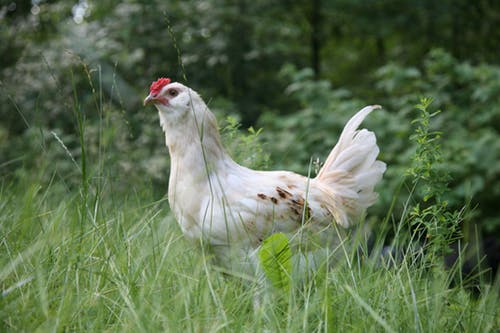Why did the chicken need to cross the road when he could have easily flown across?
Yes, unlike what a lot of people thing, gallus gallus domesticus, otherwise known as the humble Chicken, are actually flighty birds. Unfortunately, modern market demands required farmers to breed chickens that were fatter and with more bone density in order to create a bountiful source of meat.
While it made for juicier chicken nuggets, it, unfortunately, robbed the gallant gallus with the ability to fly. Fortunately, not all chickens are grounded.
Flying Chickens
Because of the aforementioned meddling of humans for the sake of capitalism, a chickens ability to fly is now mostly dependent on what breed it is:
Orpingtons and Wyandottes are typically billed as ‘heavy’ breeds, hens of this breed can still kind of fly if you consider getting a foot off the ground for short distances flying. The Orpington and Wyandottes inability to fly is due to its wing-to-body ratio. Basically these breeds were bred specifically to have smaller wings and fatter bodies, making them wobble from side to side when walking and basically robbing them of the skies. Red Rangers, despite being heavy and bred for meat, have also been known to flee from flocks by taking flight. However, they don’t usually fly far, but hey, any distance is good enough!
Mediterranean breeds, on the other hand, such as Leghorns and Ancona, are more known as the kind of chickens that fly, with their daredevil cousins the Araucanas being well-known for roosting up high on tall trees at night. The Swiss Spitzhaubens, or Appenzeller, are also flighted birds, thanks to its relatively light weight of 3 to 4 pounds.
Bantams, however, are perhaps the most well-known of all flying chickens, thanks to their relatively small size, weight, and proportionate wingspan. Bantams are known to fly up even tall trees whenever they get spooked by predators. Farmers would do well to have high fencing around coops if they Bantams flocking about!
But Why Do Chickens Try to Fly?

Chickens fly for three reasons: to get away from a predator, to investigate something, and sheer willpower.
Despite the small distance of their flying, in the natural world, that just might be enough for a chicken to make themselves out of reach from most predators. Higher flying chickens can also take advantage of their flight to get up onto vantage points like treetops to stand as a lookout for the rest of their flock.
Hens, on the other hand, will use their flight to investigate things that pique their interest. Hens are naturally curious, and intensely so, and will not hesitate to use their flight in order to reach previously-unreachable places if they think there’s food or a good time to be had.
For backyard breeders, they’ll notice that their hens are almost always doubly curious if they find out that the neighboring garden has beautiful flower beds or, heaven forbid, a vegetable garden. Once these hens get wind of the paradise next door, they will try their darndest to beat gravity and fly over for a nibble and a peek.
And it’s that last part that helps them fly: determination. If a chicken wants to escape a predator or its coop, or if it wants to be a little naughty and hop over to the neighbors for a dust bath in their flower beds, a chicken will find a way to fly, yes, even heavier breeds like Barred Rocks will still try their best to get over your fence. Lighter breeds, on the other hand, will need either a really high fence, which might be impractical or just keeping a closer eye on them.
If you’re not keeping a vigilant watch over lighter breeds, you’re going to have to install an impractically high fence, because light breeds like Appenzellers are known for clearing 8-foot high fencing easily.
Chicken Flight Records
Farmers and backyard breeders are no stranger to flying chickens, and in fact, encounter them probably on a daily basis. In fact, outside of the city, chicken flying records abound, with some facts stunning even some veteran chicken coopers:
The longest recorded chicken flight was 13 seconds when a chicken was observed in 2014 to fly for that long. Meanwhile, the longest distance ever covered by a chicken in flight was a whopping 301.5 feet, almost 100 meters!
So, Yes, Chickens Can Fly
Usually, it’s the hens that take flight more often than the roosters. But of course, this all depends on your definition of ‘flight’: remember, while chickens can be light enough to take to the skies, they certainly won’t have the same height and distance as, say, sparrows or seagulls. However, if it’s just a hop and a skip, then chickens are definitely up there for flying birds.
Luckily, distance is never part of a chicken’s thought process when it tries to fly: it will almost always be either curiosity or safety. Anything beyond that is beneath the noble fowl.
Remember: there’s a reason it’s called “flying the coop” after all!

